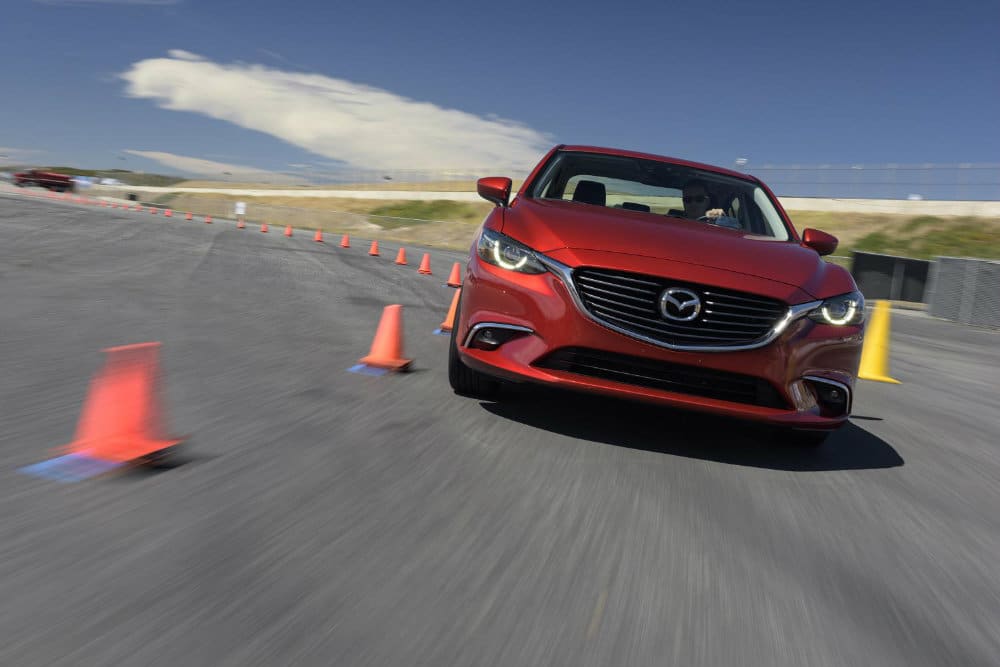The 2017 Mazda6 is the automaker’s first North American model with Skyactiv-Vehicle Dynamics, a series of new motion control technologies. The innovations tap into the engine, transmission, chassis, and body to enhance “Jinba Ittai”, the signature feel of all Mazdas.
G-Vectoring Control (GVC), the first in the series, debuted in the updated Axela (Mazda3 outside Japan), which recently went on sale. GVC technology actually uses engine power to boost chassis feel.
Human Centered
The automaker’s philosophy focuses heavily on the driving experience. GVC varies engine torque in accordance with steering inputs. This creates a specific control of lateral and longitudinal acceleration forces, optimizing the vertical load on each wheel. As a result, the vehicle’s direction and driver’s intentions are more in unison, reducing unnecessary steering inputs.
GVC works well in a number of situations, from stop-and-go traffic and highway cruising, to bad weather, twisty roads, and emergency maneuvers.
Strong Bond
The aforementioned “Jinba Ittai” is a Japanese term describing the nature of the relationship between horse and rider. In similar fashion, Mazda’s engineering and design teams look for ways a driver can form a bond with their vehicle. Skyactiv-Vehicle Dynamics is part of that ideology, whereby Mazda cars are built to meet people where they are.
G-Vectoring Control is the first technology of its kind.
*Carl Anthony is Managing Editor of Automoblog and resides in Detroit, Michigan.
Photo & Source: Mazda


